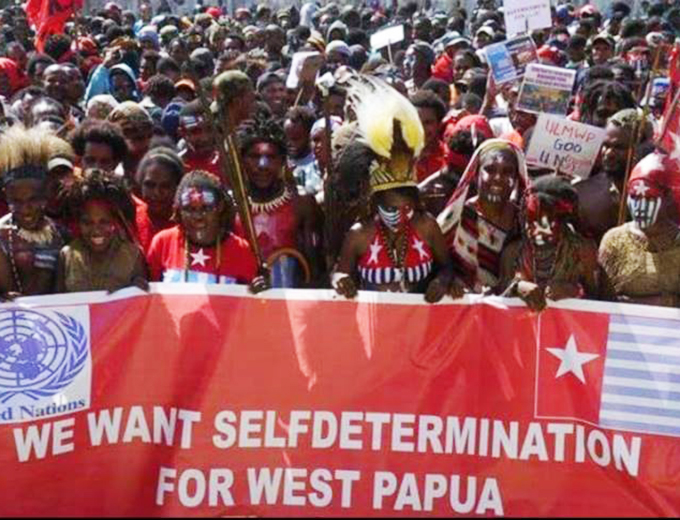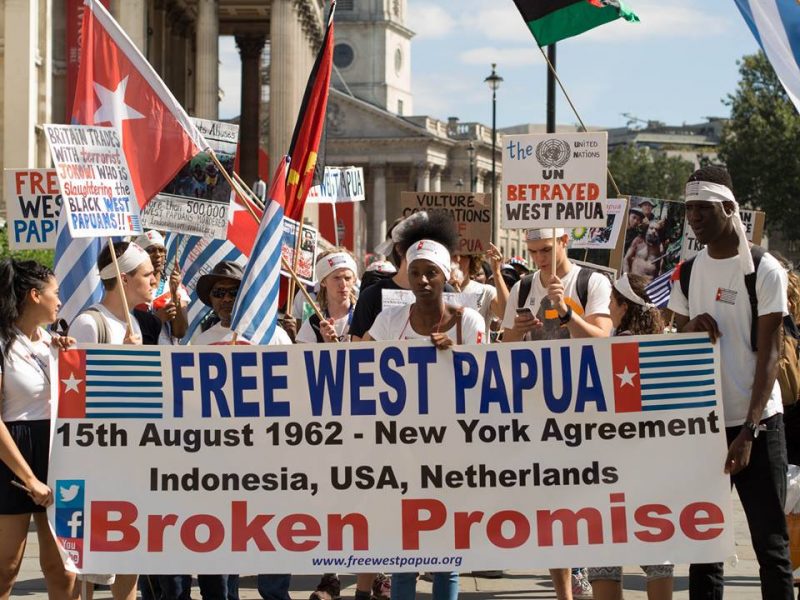Over the years, there have been reports of an ongoing struggle for independence in Indonesian-controlled West Papua.
The people of West Papua, a protectorate of Indonesia, continue to hit the streets to demand independence from their masters even as the military mount ceaseless attacks on them.
But then, what has actually been the story of the people of West Papua and why are they longing so desperately to be separated from Indonesia?
A protester is killed in West Papua – after a week of unrest during renewed calls for independence from Indonesia.
— Natasha Fatah (@NatashaFatah) August 24, 2019
Many in West Papua say they are a distinct society, and are subject to constant racism and discrimination.
I speak with West Papua independence leader @BennyWenda pic.twitter.com/2k0FUIedsJ
Tens of thousands of years ago, West Papua was originally populated by Melanesian people but after little contact with the Western world, it was finally formally colonized by the Netherlands in 1898.
The islands that now make up Indonesia were also colonized by the Dutch but when the Republic of Indonesia became an independent nation-state in 1949, West Papua did not join the country.
The Dutch government recognized that West Papua was geographically, ethnically and culturally very different to Indonesia and so the Dutch government began preparing West Papua for its own independence throughout the 1950s.
At the end of 1961, West Papua held a Congress at which its people declared independence, and raised a new flag – the Morning Star.

This new freedom was short-lived because in 1963, Indonesia seized the western half of the island of New Guinea, of which West Papua was a part of, shortly after the Dutch colonists pulled out.
West Papua became the twenty-sixth province of Indonesia in 1969 after the so-called “Act of Free Choice”, sponsored by the UN, saw the transfer of official administration from The Netherlands – the colonial power – to Indonesia.
Actually, in 1962, the United States government, at the height of the Cold War, sent a letter signed by its president to the Dutch Prime Minister at the time, strongly urging the Dutch government to hand over West Papua to Indonesia, in an attempt to appease a communist friendly Indonesian government.
A meeting engineered by the U.S. government was set up between Indonesia and the Netherlands resulting in the New York Agreement, which, in 1962, gave control of West Papua to the United Nations and one year later transferred control to Indonesia.
The Papuans were never consulted. However, the agreement did promise them their right to self-determination – a right which is guaranteed by the UN to all people in the world.
In 1973, Indonesian president, General Soeharto, renamed the province from West Papua to Irian Jaya, “Victorious Irian” but the indigenous movement rejected the new name, preferring to be identified only as West Papuans. This began the resistance of the indigenes to Indonesian rule over them; a resistance that has continued till date.


After taking control of West Papua, the Indonesian government initiated a number of immediate administrative actions and policies, including the immediate banning of political parties.
It also crushed nascent Papuan nationalism after which some tens of thousands of troops, police and special forces flooded in, making West Papua one of the world’s longest-running military occupations.
In 1964, a UN-supervised referendum that has been described as a sham was held. Just over a thousand hand-picked representatives were bribed, cajoled and threatened into voting in favour of Indonesian rule.
For twenty-six years, Indonesia has ruled the people of West Papua with repressive policies, controlling the indigenous population through the most unjust systems of colonial occupation, forcing the indigenous people to fight back.
West Papuans are not Indonesian. They are Melanesian Pacific Islanders and have been for over 60,000 years. pic.twitter.com/Axni1Aves6
— Free West Papua (@FreeWestPapua) August 20, 2019
A recent escalation in killings, especially around the massive Freeport copper and gold mine in the central highlands, has been widely reported in the media.
When in 2014, Indonesia’s politically moderate President Joko Widodo came to power, West Papua observers had high hopes he might broker peace in the region, much the same way the government of his predecessor, Susilo Bambang Yudhoyono, was able to quell a long-running separatist conflict in Aceh.
This, however, has not materialized as Widodo has not been able to control the Indonesian military in West Papua. He also doesn’t seem to realize that economic development is not the solution to ending the armed resistance in the region – West Papuan leaders want a political resolution, not an economic one.
Today, the separatists are mounting pressure through their campaign for independence from Indonesia for several reasons, including the claim that they do not identify as Indonesians but as Melanesians and more aligned to the other Melanesian provinces like Papua New Guinea.
Recent conflicts, including the above video of a student being shot by militias, have spurred the indigenes of West Papua to forcefully demand independence from Indonesia.
The world doesn’t seem interested in what is happening in West Papua but there are concerns that, just like Rwanda, if nothing is done, deaths could become genocidal and by then, it might only be too late to turn the attention towards this little-known decolonization movement.










